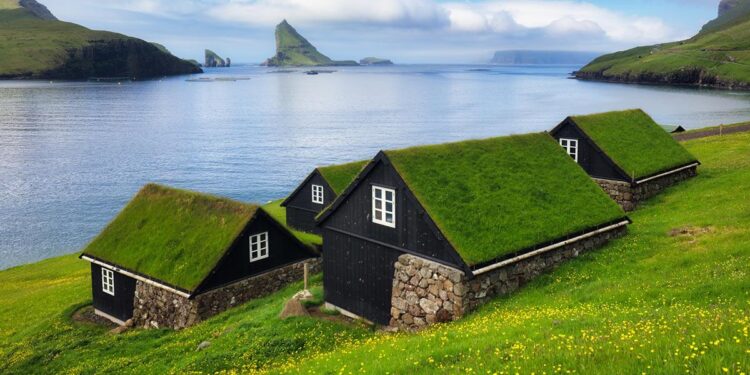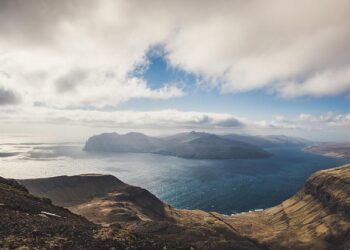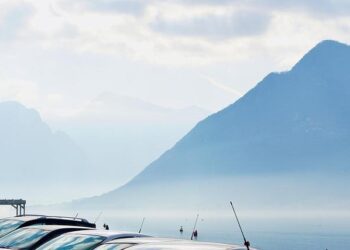The Faroe Islands, a Nordic archipelago known for its rugged landscapes and remote location, is making headlines-not for launching rockets into orbit, but for a unique approach to space exploration that intentionally avoids leaving Earth. The newly announced Faroe Islands Space Program is set to redefine what it means to explore “space” by focusing entirely on terrestrial research and innovations designed to advance our understanding of Earth itself. This unconventional strategy challenges traditional notions of space programs and underscores a growing interest in harnessing technology and scientific inquiry closer to home.
Faroe Islands Space Initiative Focuses on Simulating Extraterrestrial Conditions Locally
The Faroe Islands Space Initiative is charting a novel path in space research by focusing entirely on creating terrestrial environments that mimic the harsh and unfamiliar conditions of other worlds. Their approach rejects traditional space missions; instead, they develop hyper-realistic simulations here on Earth, leveraging the islands’ remote landscapes and extreme weather patterns. These controlled ecosystems enable scientists and engineers to test astronaut equipment, study human adaptation, and prepare for potential future missions-all without ever leaving the planet.
Key features of their research include:
- Isolation experiments mimicking the psychological challenges of space travel.
- Extreme weather simulations replicating conditions found on Mars and icy moons.
- Advanced testing rigs designed for habitat sustainability and life support.
| Simulation Type | Terrestrial Location | Main Focus |
|---|---|---|
| Mars Surface Weather | Vágar Island | Wind & Dust Storms |
| Moon Habitat | Mykines | Life Support Systems |
| Long-Duration Isolation | Streymoy | Psychological Resilience |
Innovative Strategies Enable Research Without Actual Space Travel
Harnessing cutting-edge simulation technologies, the Faroe Islands Space Program is redefining what it means to conduct space research. Instead of launching costly and complex missions beyond Earth’s atmosphere, the team employs virtual reality environments and advanced AI-driven modeling to replicate the conditions found on celestial bodies. This approach not only slashes the financial and environmental costs traditionally associated with space exploration but also accelerates experimental iterations in a controlled, earthbound setting.
The program incorporates a variety of groundbreaking tools and methods, including:
- Augmented reality habitats simulating Martian and lunar surfaces for astronaut training.
- Remote robotics control centers to test equipment responses to extraterrestrial terrain.
- Machine learning algorithms predicting cosmic phenomena based on extensive terrestrial data.
| Innovative Method | Purpose | Benefit |
|---|---|---|
| Virtual Gravity Chambers | Simulate low-gravity environments | Hands-on testing without leaving Earth |
| AI Data Synthesis | Model cosmic radiation effects | Predictive insights for mission safety |
| Remote Rover Piloting | Test rover mechanics remotely | Reduced risk and immediate adjustments |
Expert Recommendations for Expanding Earth-Based Space Exploration Programs
Innovative approaches grounded on Earth’s diverse environments are proving essential for advancing space exploration without ever leaving the planet’s surface. Experts emphasize harnessing remote locations like the Faroe Islands to simulate extraterrestrial conditions. This method helps refine technology and human endurance for future space travel while keeping programs sustainable and cost-effective. Integrating interdisciplinary research-from geology to atmospheric science-fosters a broader understanding of how to thrive in hostile environments, driving innovations applicable both on Earth and beyond.
Key recommendations from thought leaders include:
- Establishment of analog habitats: Developing long-term settlements in remote regions mimicking other planetary surfaces.
- Collaborative multinational efforts: Encouraging shared data and resource management across countries to maximize outcomes.
- Investment in autonomous systems: Utilizing AI and robotics to replicate tasks critical for extraterrestrial missions without human presence.
- Public engagement and education: Creating awareness and involvement to sustain interest and funding.
| Focus Area | Benefit | Example |
|---|---|---|
| Habitat Simulation | Test human adaptability | Faroe Islands research stations |
| Autonomous Systems | Reduce astronaut risk | Robotic payload management |
| International Collaboration | Resource pooling & data sharing | Global analog mission consortium |
Closing Remarks
As the Faroe Islands embark on their unconventional space program, prioritizing Earth-bound exploration over extraterrestrial travel, they challenge the traditional notions of space innovation. By focusing on sustainable technologies and atmospheric research, this initiative underscores that expanding our horizons doesn’t always mean leaving the planet. The program serves as a compelling reminder that some of the most profound discoveries-and solutions to global challenges-may lie closer to home than ever before.
















